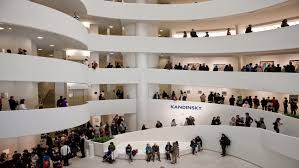Visual imagery overload
- Carol Anne Jones

- Sep 12, 2018
- 3 min read
Updated: Aug 24, 2020
Being involved in Art Education, I recognise that western art education seems to be increasingly adopting the term visual culture, rather than art to describe the central concern in teaching art. Maybe it’s because art educators are redefining their field and others outside art education are attempting to define visual culture as a transdisciplinary field in its own right.
Visual Culture Art Education is often seen as a contemporary pedagogical practice that integrates visual culture into classrooms. It’s been seen as a way to include popular culture and mass media into the art curricula as a better way to connect with students' lives. It's justified as a means to develop higher level thinking skills that can assist students in the ability to navigate through the constant barrage of imagery they see daily. Visual culture typically not only examines the visual message, but the culture it comes from or is placed in, the history of art and visual imagery, the technological advancements that change the type and place of visual art that is shown, and also questions how aesthetics is culturally constructed.
The other side of the debate is should "high" art be sacrificed to "low" and what is more important – history, criticism, aesthetics or creativity?
The concept of Visual Culture at a mid school level tends to be simplified into three areas; the Art Museum; visual imagery and the constructed environment. A typical definition of what Visual Culture is would be something like - it’s the images we see in our daily lives that may or may not be considered high art.
Older students might progress to studying the realm of human made images, objects, and ideas that particularly influence our lives through our visual sense and mental imaging, for example things like clothing, cards, products, artwork, film, and television which are made in cultural contexts to serve cultural purposes.
The first area is the Art Museum which includes all of the artworks that have found their way into public and private collections - the works in artists’ studios, commercial galleries, and other collections that have already been designated as works of visual art then placed in museums for preservation, study, and exhibition.
Area two is visual Imagery that includes television, cinema, music videos, graphic design, illustration, video games, comics, the myriad forms of digital imagery and computer graphics etc., those unenshrined visual artifacts that are often labelled as entertainment and tools of consumerism. Students might investigate why the media monopolises our lives, what they tell us about ourselves, how they shape our values etc. They might even consider which of these visual forms should eventually find their ways into museum collections and which should erode away with disuse.
The third area is the constructed environment which includes architecture, buildings of any kind, exterior spaces, landscape architecture, the ways humans restructure urban, suburban, and rural landscapes, spaces we fill with everyday artifacts like product design, ritual objects, toys, collectibles etc. Like area two, some of these artifacts will find their way into art museums and some probably never will.
Isn’t it a visually complicated world we live in? Sometimes I find my students just love to make something, to paint, to collage or make a hat. Times they change, sometimes things go full circle but for now…..
References:
Wilson (2007)







Comments